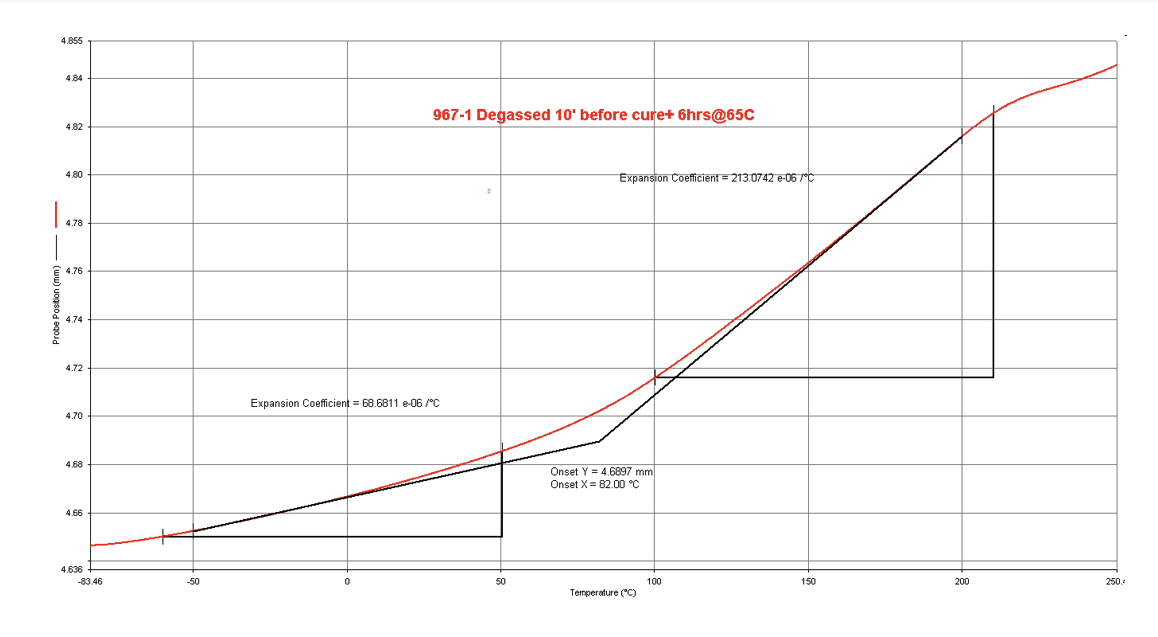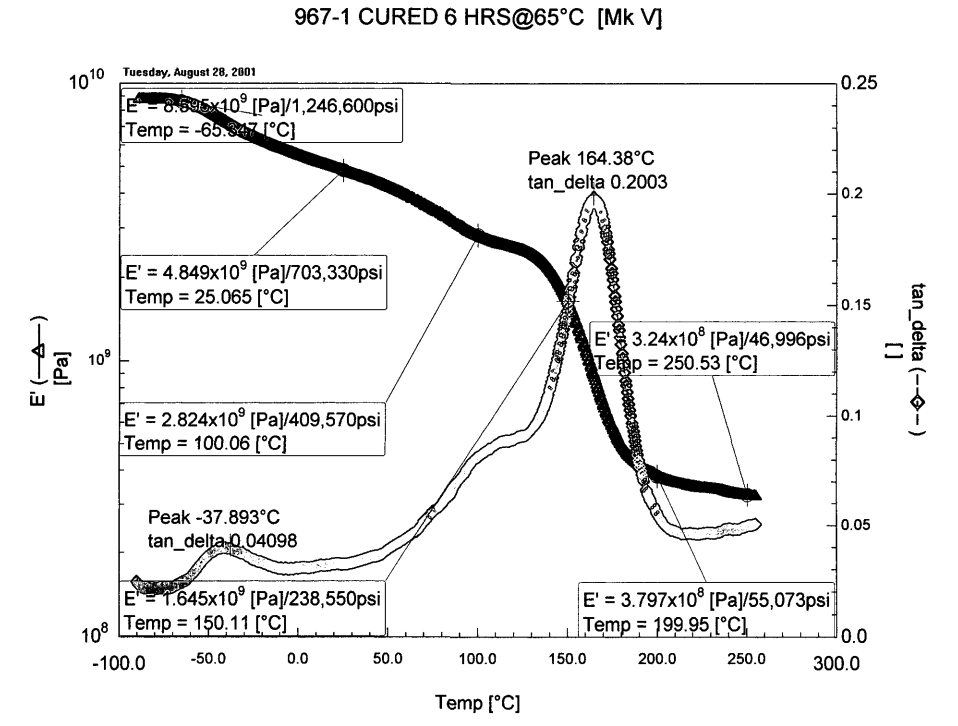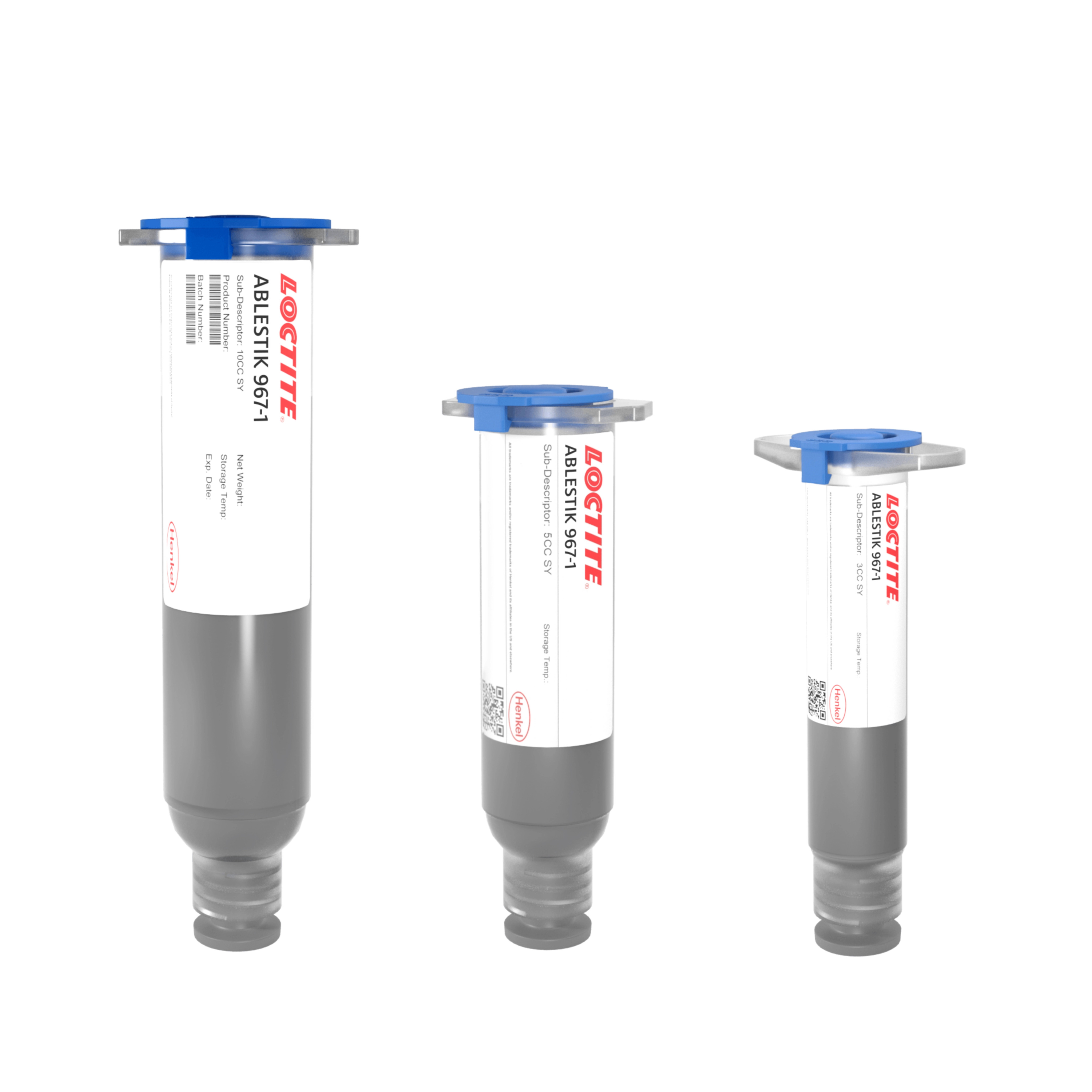LOCTITE ABLESTIK 967-1
- Two components
- Low temperature cure
- Dispense and Screen print
Product Description
LOCTITE ABLESTIK 967-1 die attach adhesive is is designed for applications which require lower-than-normal cure temperatures. It is ideal for application by automatic dispenser, screen printing, or hand probe.
LOCTITE ABLESTIK 967-1 is an electrically conductive epoxy adhesive which reduces the risk to delicate components and increases manufacturing through-put with its quick, low temperature cure.
LOCTITE ABLESTIK 967-1 has an average and maximum silver particle size of 8 µm and 25 µm respectively. 967-1 was developed as a direct replacement for H20S and it has replaced it for many customers including defense and aerospace applications (NASA outgassing approved when cured for 2hrs at 100C).
Cure Schedule
- 6 hours @ 65°C
- 2 hours @ 80°C
- 30 minutes @ 120°C
- 15 minutes @ 150°C
Technical Specifications
| Thermal Properties | |
| Glass Transition Temperature (Tg) Glass Transition Temperature (Tg) The glass transition temperature for organic adhesives is a temperature region where the polymers change from glassy and brittle to soft and rubbery. Increasing the temperature further continues the softening process as the viscosity drops too. Temperatures between the glass transition temperature and below the decomposition point of the adhesive are the best region for bonding. The glass-transition temperature Tg of a material characterizes the range of temperatures over which this glass transition occurs. | 75 °C |
| Weight Loss @ 300°C | 0.52 % |
| Electrical Properties | |
| Volume Resistivity Volume Resistivity Volume resistivity, also called volume resistance, bulk resistance or bulk resistivity is a thickness dependent measurement of the resistivity of a material perpendicular to the plane of the surface. | 1.5x10-2 Ohms⋅cm |
| Physical Properties | |
| Viscosity Viscosity Viscosity is a measurement of a fluid’s resistance to flow. Viscosity is commonly measured in centiPoise (cP). One cP is defined as the viscosity of water and all other viscosities are derived from this base. MPa is another common unit with a 1:1 conversion to cP. A product like honey would have a much higher viscosity -around 10,000 cPs- compared to water. As a result, honey would flow much slower out of a tipped glass than water would. The viscosity of a material can be decreased with an increase in temperature in order to better suit an application | 14,000 mPa.s |
Additional Information
What is an acceptable viscosity change for die-attach dispensing?
Typically, we reckon that 25% change in viscosity is acceptable for die attach dispense processes. Based on this, 967-1 should be good for at least 8 hours (at 25°C). Please check the Technical documents section for more dispensing and pot life information.
LOCTITE ABLESTIK 967-1 TMA Curve LOCTITE ABLESTIK 967-1 DMTA Curve
LOCTITE ABLESTIK 967-1 DMTA Curve
The Tg and modulus will increase as the cure temperature is increased. Tg & modulus are determined mainly by the organic (resin) properties.
The CTE should not change much if the cure temperature is increased. The CTE is determined mainly by the filler & filler content.



